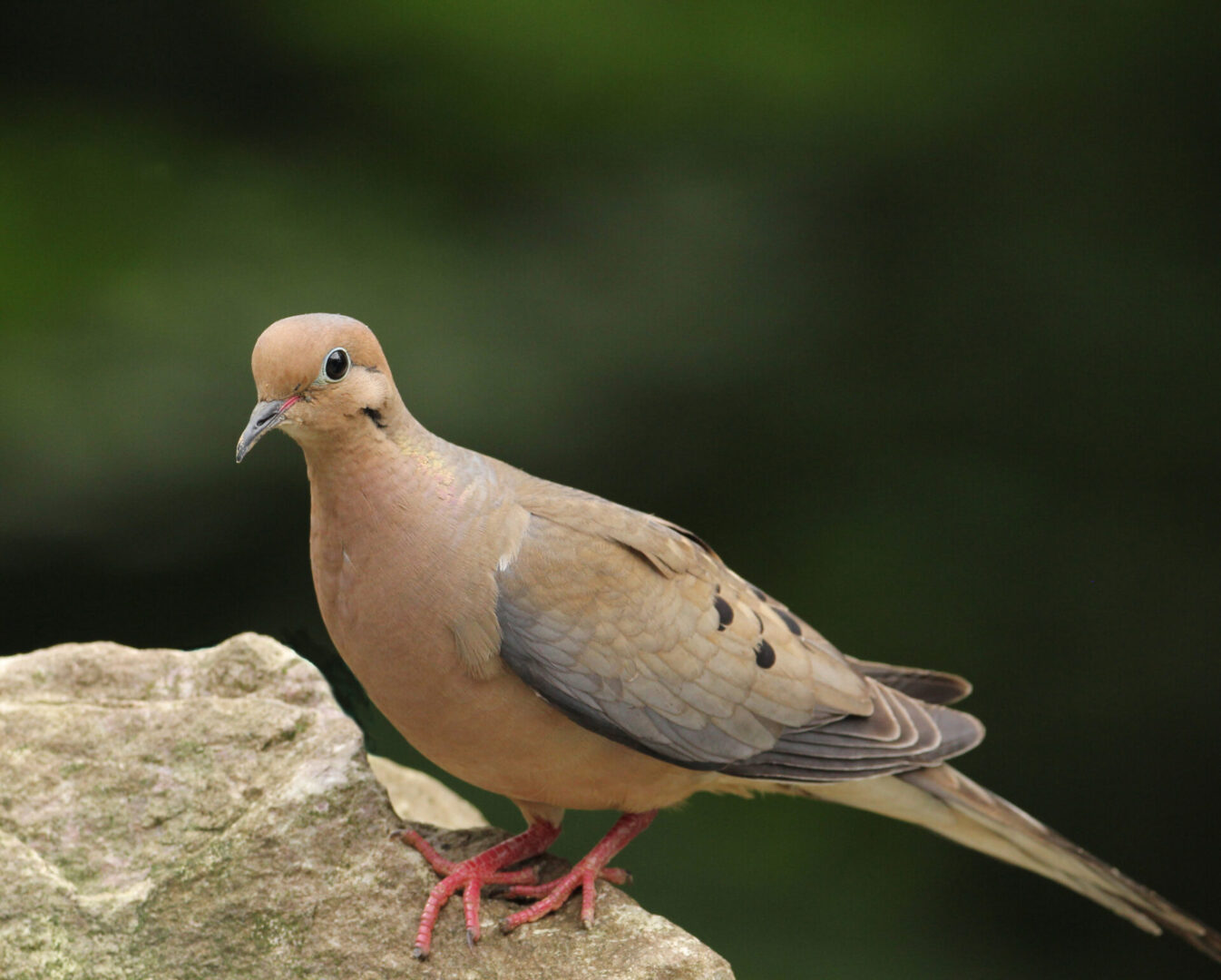
Mourning doves are found throughout Centre County and they are regular feeder visitors. Photo by Mark Nale | For The Gazette

Mourning doves are found throughout Centre County and they are regular feeder visitors. Photo by Mark Nale | For The Gazette
One of the 10 most common birds in the United States is the mourning dove. Its prolific breeding rate allows it to keep up with the harvest of millions of birds annually by hunters and poor winter survival in some areas. It breeds throughout Pennsylvania and all of the lower 48 states, in southern Canada and in Central America and the Caribbean.
Mourning doves (Zenaida macroura) measure about a foot long and have a wingspan of approximately 18 inches. They have a muscular breast, a small head and a long, pointed tail. The species name “macroura” is Greek for “long-tailed.”
At first glance, a dove appears to be a basic grayish-tan, but closer inspection reveals black spots on its wings, a touch of olive on its back, a pinkish cast to its neck and breast, and distinctive pink feet.
Outer tail feathers display their white tips when these speedy birds are in flight.
The eerie “aacooo-coo-coo-coo” call made by the male in the morning and evening is often heard by rural dwellers. People new to birding usually do not associate the dove’s owl-like call with the birds that visit their feeders.
However, it is the birds’ low-pitched mournful sounds that give these doves their common name.
Doves are fast fliers — up to 70 miles per hour. Their wings make a fluttering whistle as they take off and a whistling noise as they fly. While they are often seen perched on wires or getting grit (small stones for their crop) along highways, they spend most of their time on the ground, feeding on waste grain and weed seeds.
Mourning doves thrive in broken woodlots and in farming country as long as there are adjacent conifers for nesting. They fly between food sources, water, grit sources and nesting habitat each day.
Although mourning doves are most abundant in Pennsylvania’s southeastern farm country, they are found in all 67 counties.
Pennsylvania Game Commission biologist Ian Gregg described mourning doves as “habitat generalists … able to obtain needed food, grit, water, roosting/nesting sites from a wide variety of natural and man-made sources.”
Doves bob their heads when they walk. They are ground feeders — they eat the seeds of ragweed, lamb’s quarter, foxtail, smartweed and others. They also consume farm grains such as wheat, corn, buckwheat, millet, oats and barley. However, because the grain they eat is already on or near the ground and therefore wasted, they are not usually considered to be farm pests.
At bird feeders, doves eat just about anything offered, including the small millet seeds that other birds usually pass up. It is easy to observe the rise and fall of dove populations by watching bird feeders throughout the year. Spring usually begins with only a few doves visiting our feeders. The population gradually grows during their long March-through-September breeding season.
Even if not harvested by hunters, the mourning dove population gradually decreases during the fall and winter. Doves are a favorite target of sharp-shinned and Cooper’s hawks. The piles of gray feathers tell the tale — the average lifespan of a mourning dove is less than one year.
According to PGC biologist Lisa Williams, the record of the oldest dove in Pennsylvania was at least 8.5 years. “This bird was banded as an adult near Reading in 2005 and was harvested by a hunter less than two miles away in December 2012,” Williams said. However, banding data shows that Keystone State doves travel an average of 54 miles from their tagging point to the point of recovery.
Although the female mourning dove lays just two eggs into a loosely constructed twig nest, her nesting cycle takes just a month, and pairs have four or five nests per year. Female doves incubate the white eggs at night while the male does so during the day. Newly hatched birds, called “squabs,” are fed a milky substance that is regurgitated by their mother. In a few days, they begin to eat seeds.
Doves are year-round residents in most of the state, but some migratory birds do exist. Many mourning doves that nest in the northern third of the state do not spend their winters there.
With about a 50% nestling survival rate, the dove population usually triples or quadruples by the time hunting season begins in September. The season this year is Sept. 1 through Nov. 25. The Pennsylvania Game Commission estimates that about 50,000 hunters harvest more than 425,000 mourning doves each fall. Even with such a large harvest and high numbers of predator kills, the state’s dove population is growing — and has been since 1965.
Receive all the latest news and events right to your inbox.

403 S. Allen St.
State College, PA 16801
(814) 238-5051
